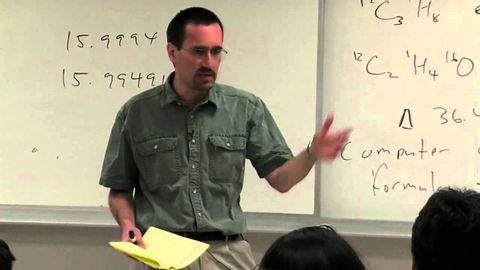
字幕與單字
化學203.有機光譜學。講座05。同位素的品質、丰度和質譜法。 (Chem 203. Organic Spectroscopy. Lecture 05. Isotopic Masses, Abundances, and Mass Spectrometry)
00
Cheng-Hong Liu 發佈於 2021 年 01 月 14 日收藏
影片單字
compound
US /kɑmˈpaUnd/
・
UK /'kɒmpaʊnd/
- n. (c./u.)複合;化合物;柵欄包圍區;混和物;複合字
- v.t.以複利計算;混合;加重;使惡化;混合;和解
- adj.複合的
B1 中級中級英檢
更多 使用能量
解鎖所有單字
解鎖發音、解釋及篩選功能
